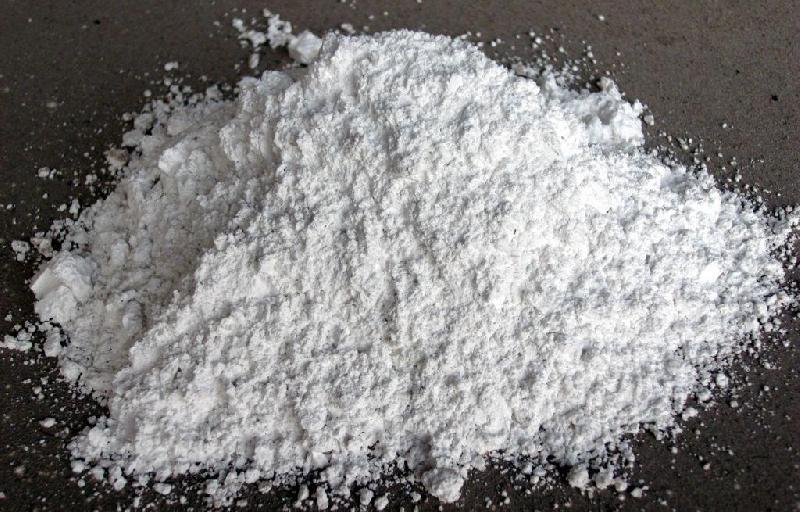The global ferric hydroxide market is an integral part of wastewater treatment, wherein ferric hydroxide is commonly used as a coagulant and flocculant. Ferric hydroxide has exceptional properties such as high surface charge density, good flocculation ability, and high sedimentation rate. These properties make it suitable for removing a variety of contaminants from industrial wastewater including pollutants, suspended solids, phosphorus, color, and heavy metals. It helps improve the quality of wastewater before discharge or reuse. Additionally, growing industrialization has increased the generation of industrial wastewater globally, which contains significant amounts of toxic contaminants. Stringent wastewater discharge rules have stimulated the demand for effective treatment before disposal. This, in turn, is fueling the use of ferric hydroxide in various end-use industries.
The Global ferric hydroxide market is estimated to be valued at US$ 4.15 Mn in 2024 and is expected to exhibit a CAGR of 5.4% over the forecast period from 2024 to 2031.
Key Takeaways
Key players operating in the Ferric Hydroxide Market Size are Faurecia, Magna International Inc., Lear Corporation, Grupo Antolin, Yanfeng Automotive Interiors, Adient, Grammer AG, Toyota Boshoku Corporation, DRÄXLMAIER Group, IAC Group, Calsonic Kansei Corporation, Sumitomo Riko Company Limited, Sage Automotive Interiors, TS Tech Co., Ltd., Sanko Gosei Ltd.
The growing demand from end-use industries such as municipal wastewater treatment, textile manufacturing, and chemical processing is driving market growth. Stringent wastewater discharge norms have increased the need for effective industrial wastewater treatment worldwide.
The ferric hydroxide market is expanding rapidly across developing regions owing to rapid industrialization and urbanization. Asia Pacific accounts for over 40% of the global market share due to the presence of developing economies such as China and India with a large industrial base.
Market Drivers
The growing importance of wastewater discharge compliance is a key driver for the ferric hydroxide market. Stringent environmental regulations stipulate acceptable limits for pollutants and toxicity levels in treated industrial wastewater before discharge. This has motivated industries to invest in efficient coagulation/flocculation processes that use ferric hydroxide. The demand is further augmented by the increasing construction of new wastewater treatment facilities worldwide to manage the volume of wastewater generated. Rapid industrialization and urbanization in emerging nations are estimated to surge wastewater volumes in the coming years, providing lucrative opportunities.
Impact of geopolitical situation on Ferric Hydroxide market growth
The ferric hydroxide market is witnessing fluctuations due to the geopolitical changes occurring globally. Many European nations are dependent on imports of ferric hydroxide from China and India. However, the increasing political tensions between these countries have disrupted the steady supply chain. This has impacted the production schedule of industries utilizing ferric hydroxide as a key input material. Manufacturers now need to rely on alternative sources or develop new local suppliers to address supply constraints. The ongoing Russia-Ukraine conflict has further worsened the supply chain disruption. Both these countries are major exporters of raw materials used in ferric hydroxide production. Prolonged war may negatively impact ferric hydroxide availability and push prices higher. This will shrink profit margins of end-use sectors and hamper overall market growth. Looking ahead, market participants must explore opportunities in politically stable regions and diversify their supplier base to mitigate geopolitical risks. Developing local sourcing and strategic partnerships will help reduce dependencies and support continued expansion.
Concentration of ferric hydroxide market based on value
In terms of value, Asia Pacific accounts for the largest share in the global ferric hydroxide market. China dominates as the leading producer and exporter, with over 50% share of global ferric hydroxide supply. Its large production of steel using ferric hydroxide as a key input has made China a vital market. Countries like India, Japan and South Korea are other major Asia Pacific markets, driven by their expanding steel and automotive industries. North America and Europe are significantly large importers of ferric hydroxide from the Asia Pacific region for use across end-use industries. However, with regional capacity additions, the shares of North America and Europe are projected to rise gradually over the forecast period.
Fastest growing region in the ferric hydroxide market
The Middle East and Africa region is expected to exhibit the fastest growth in the ferric hydroxide market during the forecast period. This can be attributed to ongoing infrastructure development projects and initiatives in the Gulf countries and Sub-Saharan Africa. There is a substantial focus on national development plans centered around urbanization, transportation and industrialization. This will bolster the demand for steel and automotive applications, driving ferric hydroxide consumption. Furthermore, governments are investing in local manufacturing facilities to meet domestic needs and reduce external dependencies. Emerging economies like Saudi Arabia, UAE, South Africa and Nigeria are the key countries poised to fuel the market growth through their expanding end-use industries.
Get more insights on This Topic- Ferric Hydroxide Market
Explore More Articles - Water & Wastewater Treatment Chemicals Market
